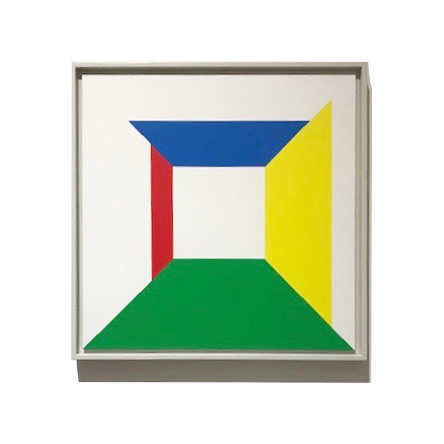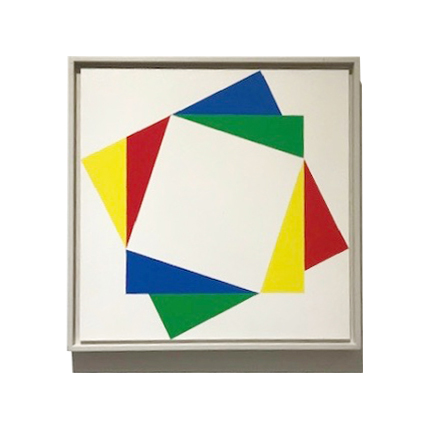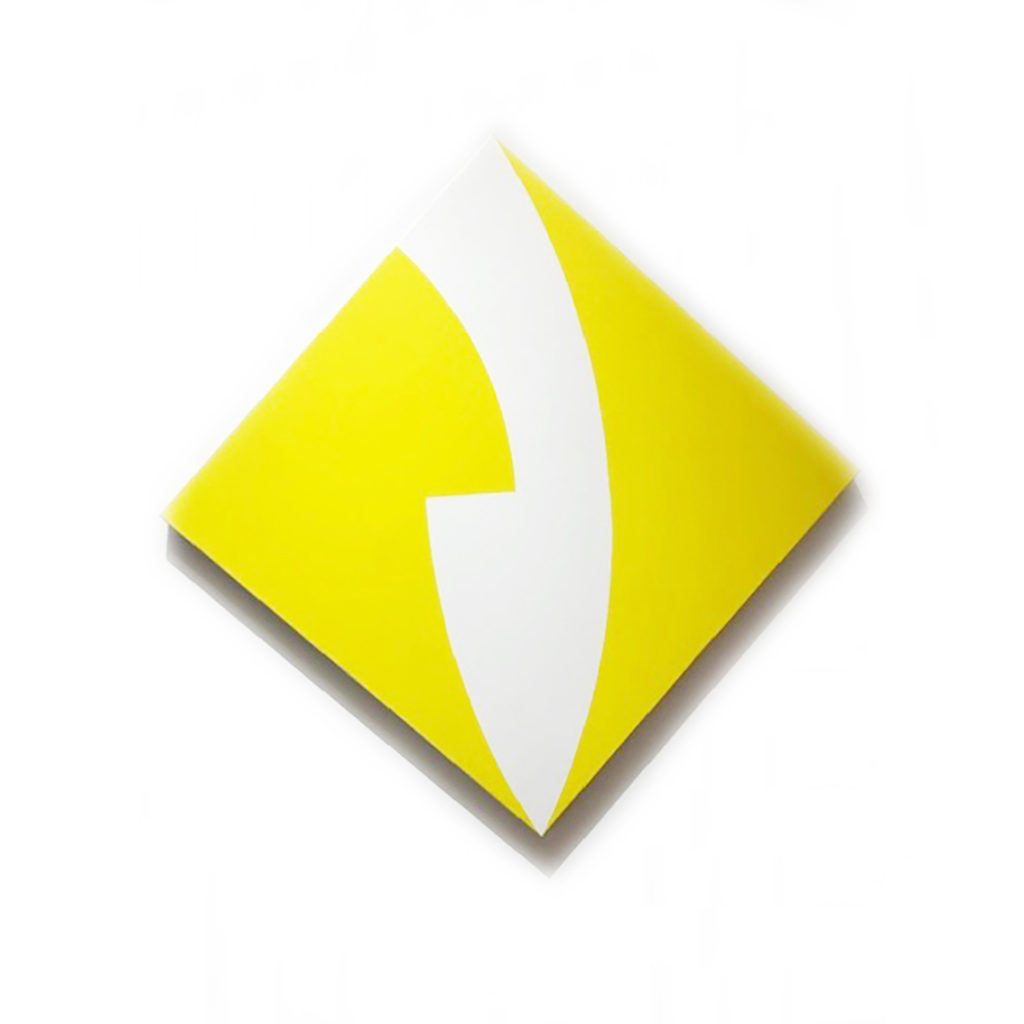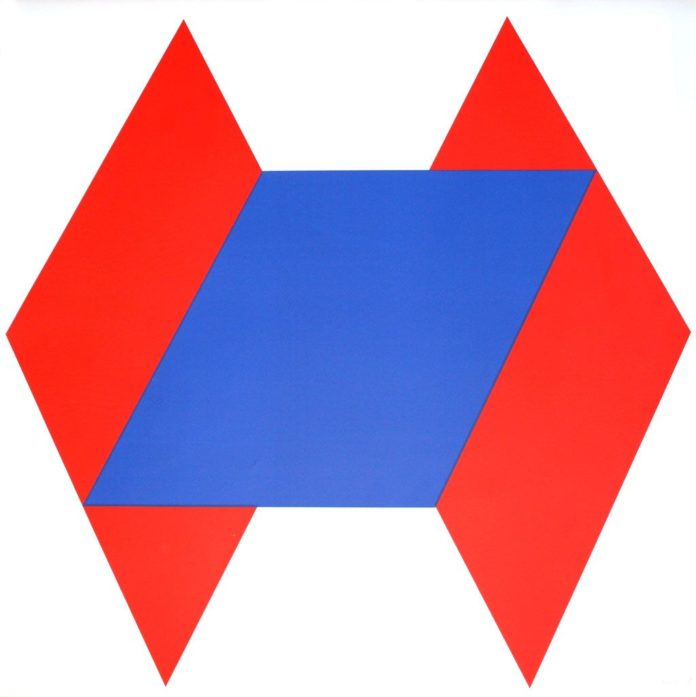BOB BONIES
Bob Bonies can be considered to be a successor of the “de Stijl” movement in as much as he did not just restrict himself to free art alone but extended his artistic work to architecture, industrial design, and art teaching, and exemplified the aim of those pioneers who wanted to use their artistic ideas for shaping their surroundings. Moreover, he can also be considered a pioneer of the second generation, as his constructivist painting imparted a new impetus to the geometric direction of art in the Netherlands of the 1960s.

Were one to look for a conceptual motif in Bonies’ art work, one would in the first instance cite the theory of Josef Albers on “The Unity behind the Many” and “The Many behind the Unity”. His method, however systematic it may be, is directed less towards the programmatic and more towards investigating the potential of variables. Thus, Bonies’ art work does not develop in a serial way as is usual in the constructivist domain, but rather in a sequence of cycles of works whose themes recur with varied points of view.

The only fixed factor in Bonies’ investigation over many years into color and form is his handling of colors: he has always used and today still uses only four colors, namely the three primary colors red, yellow and blue, the secondary color green (as the complementary color of red) and the noncolor white.
The basic colors and forms appear in different systems of arrangements, of which there are, as regards their number and combination, essentially two types of picture. First there is the closed and contained absolute shape of the square which dominates Bonies’ work and which also occurs standing on a corner (diamond), and then there is, so to speak, the polarly opposed type, the “shaped canvas”, which is sometimes included in the shaping of the picture. This novel shape was developed by American artists during the 1960s and was intended to free them from the traditional rectangular pictorial shape in order to achieve a congruence between picture and format, as well as at the same time attaining an enhanced objectivity.




CHABOT FINE ART
Noordeinde 95
2514 GD The Hague
The Netherlands
Leny-Marie Chabot: (+31) 6 18 13 74 29
Alexandra Siebelink: (+31) 6 13 97 69 94




